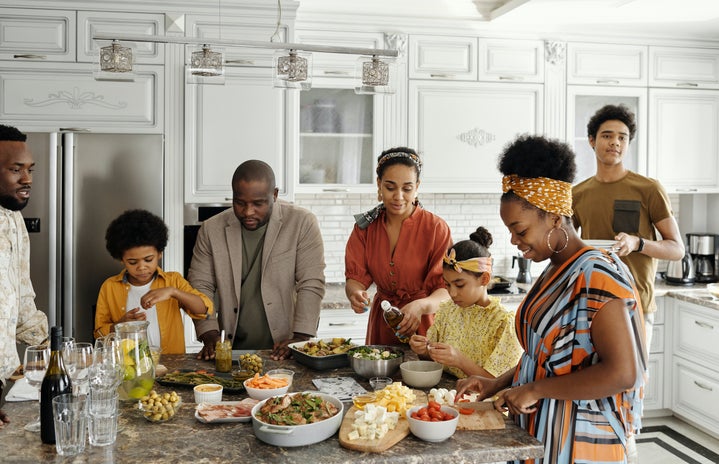National Adoption Day is celebrated on May 25th in Brazil, so it is necessary to have a parameter on how this scenario is in 2024. The National Adoption and Reception System (SNA) was created by the National Justice Council in 2019, aiming to monitor the adoption processes of children and adolescents in Brazil. Through the platform, it is possible to check statistics in detail across all states in the country.
Children and teenagers waiting for adoption in São Paulo
According to the SNA, around 1,176 young people are not linked to suitors in the state of São Paulo. Of these young people, it is estimated that 47.1% are brown, 35.7% are white, 14.8% are black and only 1.5% are indigenous. Males represent 54.8% of these children.
In addition, 1.2% of young people suffer from infectious diseases. Among PWDs (Persons with disability), 10.6% have intellectual disabilities, 1.3% have physical disabilities and 3% have physical and intellectual disabilities. Around 14.2% of children and adolescents have some health problem.
About the age group, people waiting for adoption aged 14 to 16 have the highest incidence in São Paulo, representing 157 individuals. Children up to 2 years old also represent a large proportion, with 151 individuals. By sibling group, 479 have no siblings, while 697 have one or more siblings. The legislation provides that siblings registered for adoption are preferably welcomed together, and any separation must have a well-founded justification.
Profile of suitors
More than 9 thousand people want to adopt throughout the state of São Paulo. Of these 9 thousand, the majority are married (78.7%). More than 60% declare that they accept any type of young person and that they intend to adopt only one person. The ages of 2 to 6 years are the most sought after by suitors, symbolizing the preference of 5,817 of these 9 thousand people seeking to adopt.
Concerning young people waiting for adoption from PWDs and with some illness, more than half of the applicants declare that they do not seek or accept this type of profile at the time of adoption.
Brazilian reality
By analyzing the search results, it is possible to identify how most suitors in São Paulo look for profiles that do not correspond to most children who need a family. Even though thousands of young people are waiting for adoption, and thousands of people are interested in adopting, the math still doesn’t add up.
Most young people in the system are over 14 years old, while the preference for this age does not reach 1%. In Brazil, late adoption – characterized when the adoptee is over three years old – still presents many difficulties for acceptance by the population. Another group of children who also suffer from the scrutiny of suitors are PWD children. According to research by the Catholic University of Pernambuco, among the biggest difficulties in adopting these children, who also represent a large part of São Paulo’s profile, are the financial difficulties of the applicants, non-acceptance by their spouses, and social prejudice.
Concerning these difficulties, there are several aid projects, such as, for example, the Adote um Boa Noite project, initiated in 2017 by the São Paulo Court of Justice, which aims to encourage the adoption of children with disabilities or over 8 years of age. Still, there is a long way to go to improve the reality of these children.
Reports and processes
To understand more the situation, let’s take a look at a few reports of people who went through the adoption process
Rita de Cássia Ramalho talks about her adoption process with Sofia in 2008: “The wait was long […] it was 4 years in line”. This delay becomes more unpredictable due to the lack of transparency in the process: “In my time there was nothing, we couldn’t even know which number was [in the queue]”.
Rita met Sofia when she already had a 2-year-old biological daughter, and reports how she had a beautiful experience meeting the child after the visits, however, she only started attending post-adoption follow-up groups recently. Regarding her process, Rita mentions: I had no psychological support, neither during nor after.
In September 2006, Mirtes Bueno de Freitas also adopted a child: her son Daniel, who was already 2 years old at the time. Regarding the process, she emphasized: “It is time-consuming, it is confidential, it is long. It’s done with lawyers too.”
During his visits to the site, Mirtes can closely observe the profile of the children in the shelters, many with siblings, older children, or with a disability: “They present you with the reality, and in this case, there are many couples who give up”. In addition to spending on the legal part to speed up the process, social assistance is also strict with people who have just adopted: “When you completed one month of adoption, the assistance called: Are you going to stay or not”. Mirtes tells how psychological support helped her during the process, both in Daniel’s development and in integrating with the new family.
In an interview with the Projeto Colabora portal, Viviane Sauerbronn and Wagner Pimentel declared that they had dreamed of having biological and adopted children since they started dating. After visits to the shelters and advice from the multidisciplinary technical team, the couple deconstructed the initial vision they had about the profile of the child they wanted to adopt: “Imagine parents of children different from the profile you outlined, visit a shelter with an open heart and try to see yourself as parents of those children”, said the team. At Christmas 2014, they adopted their sons Flávio and Alejandro, aged 4 and 8 respectively.
———————–
The article above was edited by Beatriz Gatz.
Liked this type of content? Check Her Campus Cásper Líbero home page for more!


